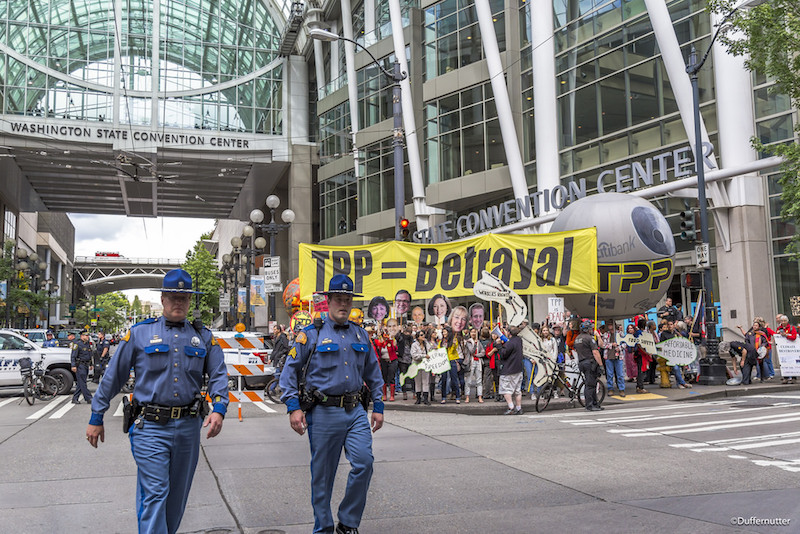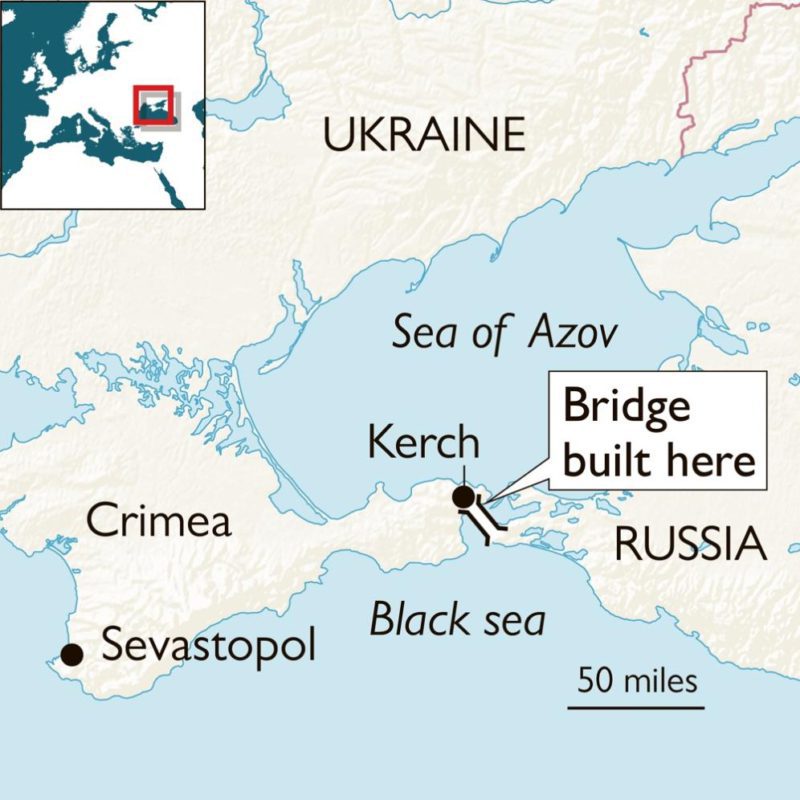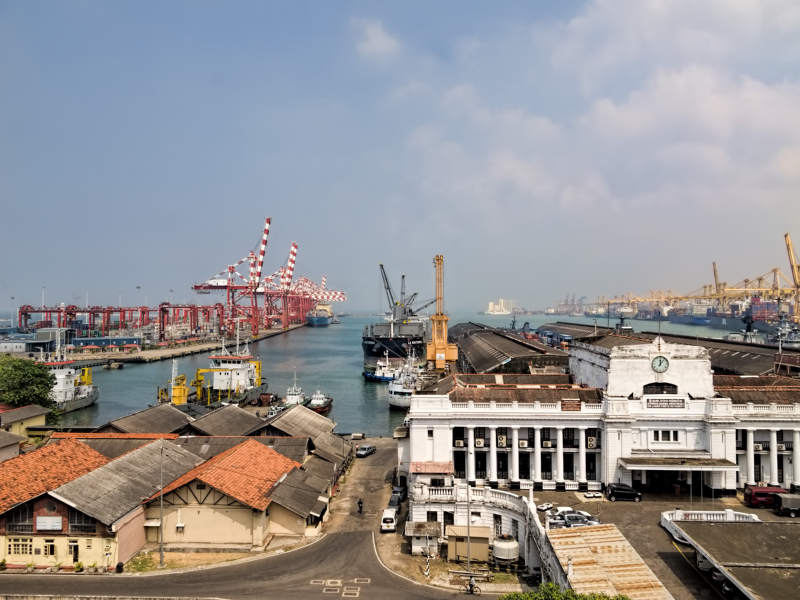In Part I of this article I outlined the benefits of the Trans-Pacific Partnership from an American perspective. In this second section, I will offer rebuttals against some of the most frequent attacks aimed at the trade deal.
A common argument leveled against TPP is that it will lead to further loss of jobs in the U.S. Critics point to past trade deals like NAFTA, which saw a sizable migration of American jobs overseas after its implementation, to argue that TPP will drive companies to move their labor forces abroad. However, the reality is that these job losses were caused not by NAFTA or other trade deals, but by the rise of China as a manufacturing powerhouse.
Those who contend that NAFTA led to job loss often refer to the fact that the U.S. has a trade deficit with NAFTA partner Mexico of around $55 billion. The problem with this claim is that the U.S. runs a trade deficit with 90% of the countries in the world, and the largest of these deficits is not with Mexico, but with China, a country from which America imports over $300 billion more than it exports. Thus, by the measure of trade deficits, much more of the job loss in the years since NAFTA has been caused by our imbalanced trade with China rather than with Mexico. In fact, M.I.T economist David Autor estimated that from 1990 to 2007, Chinese imports accounted for 21% of the decline in U.S. manufacturing employment. As America does not have a bilateral trade agreement with China, it is clear that free trade deals like NAFTA and TPP have not been the primary cause of job loss in the U.S., instead the economic rise of China is a better culprit.
Not only would TPP not cause job loss, it would also likely help stem the flow of jobs to countries with cheap labor, specifically Vietnam and Malaysia, by raising the labor standards in these nations. In order to ensure that Vietnam and Malaysia, the TPP signatories with the worst labor records, abide by the terms of the deal, the U.S. singled them out and negotiated side deals with the two countries. The side deals require the two nations to allow the formation of unions, increase protections against discrimination and stiffen penalties for forced labor. Under these agreements, Vietnam and Malaysia will only be able to join TPP once the U.S. has determined that they have met these requirements. Thus, Washington has put in place measures that would ensure that Vietnam and Malaysia level the playing field with regards to labor before they reap the benefits of TPP. By compelling two large Asian manufacturing nations that employ cheap labor to raise their standards, TPP would keep more jobs from leaving America.
Other criticisms of TPP center on the deal’s use of Investor-State Dispute Settlements (ISDS), which allow corporations to file a suit against a TPP country in front of an international tribunal if they feel that the country has failed to abide by the rules of TPP. Some argue that these courts favor companies over states, giving them too much power and potentially allowing them to overturn regulations intended to rein business in for the public good. However, upon closer examination of ISDS, which have been used in past trade deals such as NAFTA, it is clear that these criticisms are unfounded. For one, ISDS decisions are a very rare occurrence, as only 356 cases have been litigated to conclusion since the tribunals were first used in the 60s. In addition, governments have actually won more cases than they have lost. According to the United Nations, states have won 37% of cases while companies have won only 25% (28% were settled before the arbitrators ruled). Given the rarity of ISDS cases as well as the historical difficulties corporations have had in winning them, it appears that the concern that ISDS could be used effectively to stop regulation is overblown.
Some economists also argue that focusing on negotiating regional deals like TPP takes away from the effort to pass international agreements through the WTO. These scholars claim that regional deals are inferior to international trade regulations because of the concept of trade diversion. This idea of trade diversion is that without any interference, countries will trade in a way that most efficiently allocates global resources. However, regional trade deals remove tariffs and provide artificial incentives for nations to increase trade among their partners in the agreement and reduce trade with countries outside the pact. This could potentially lead to an allocation of global resources that is less efficient than the default distribution. Thus, economists who adhere to this idea of trade diversion favor regulations that apply to all nations, such as those implemented by the WTO, since they do not provide unnatural incentives to trade within a constrained group.
The validity of the theory of trade diversion is often debated by economists, as some say it that it is flawed due to its ignorance of dynamic issues and changing consumption patterns. But even if we assume that the concept is valid and that there will be losses in trade due to diversion, TPP is still a beneficial agreement overall. The economist Robert Z. Lawrence argues that critics overlook the fact that deals like TPP do more than just remove trade barriers, they also add value by establishing common regulatory practices that make conducting business between signatories easier. While nations might lose profits due to diversion, these losses are cancelled out by the profits produced by companies increasing their foreign investment, as international operations are made more attractive through the standardization of regulation.
The argument against TPP is also hampered by the fact that global agreements through the WTO, the alternative method of trade liberalization that anti-TPP economists often advocate for, have proven to be very difficult to negotiate. A good example of this is the collapse of the Doha round of WTO negotiations, as developing and developed countries were unable to agree on issues of agricultural subsidies and tariffs. Since the demise of the Doha round, countries have moved to enact changes in trade primarily through regional deals like TPP, as countries have recently been more willing to liberalize with respect to neighbors than on a global level. Even for those economists who believe that WTO agreements are superior to regional pacts, they generally recognize that liberalization is always a positive outcome, even if some trade diversion occurs. Thus, since negotiations through the WTO have hit major roadblocks, these critics should get on board with TPP as a means of actually achieving trade liberalization in today’s political climate.
Overall, the Trans-Pacific Partnership is a great deal for the U.S. The deal will level the playing field for American companies by removing trade barriers and standardizing regulations, enabling them to expand and flourish in Asia. TPP will also help U.S. workers by compelling countries with weak industrial standards like Vietnam and Malaysia to improve conditions for labor, leading more companies to keep manufacturing in America instead of moving overseas. With regards to China, TPP will ensure that Washington dictates the rules of trade in Asia while putting pressure on Beijing to end their protectionist policies. Critics of the deal have tried to prevent its implementation by claiming that TPP will harm American workers, that ISDS will give corporations too much power and that the agreement will lead to damaging trade diversion. However, as demonstrated previously in this article, these concerns are largely unfounded. Thus, Congress should ratify the TPP deal and usher in these favorable reforms to benefit American trade in the Pacific Rim.
Photo: HD troopers at TPP = betrayal rally localize this 2016 camp by Backbone Campaign via Flickr. Licensed under CC By 2.0.
Disclaimer: Any views or opinions expressed in articles are solely those of the authors and do not necessarily represent the views of the NATO Association of Canada.




